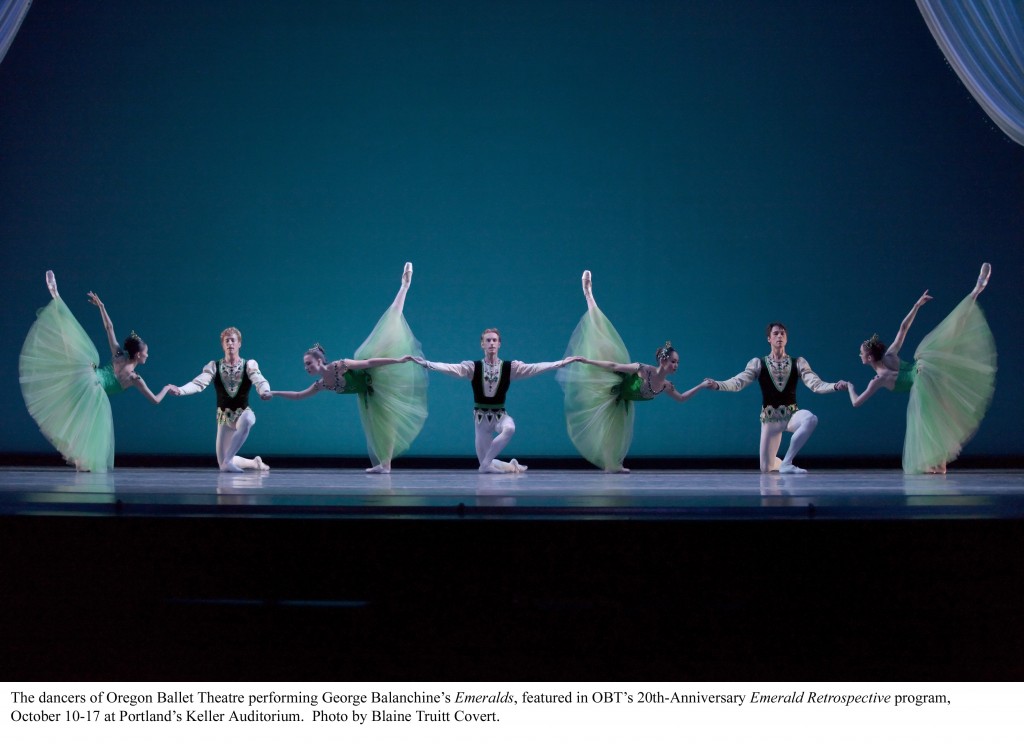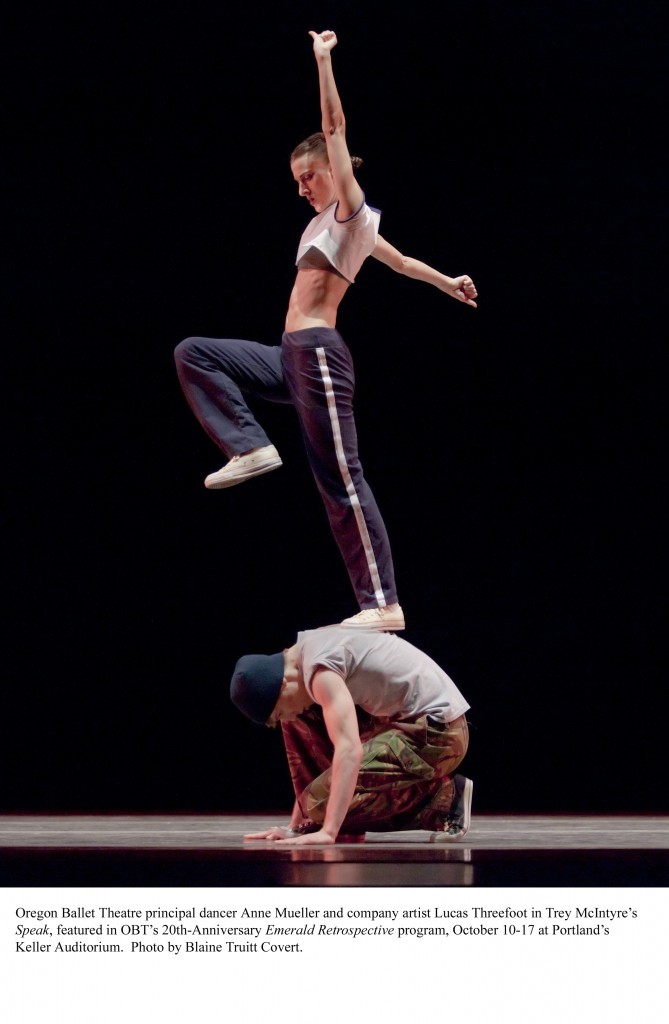
Once again Art Scatter is pleased to have the considerations of dance critic Martha Ullman West appear in our august corner of virtual space. Martha, who also reviews ballet for The Oregonian, is working on a biography of dancer and choreographer Todd Bolender. Plus, she’s a charter member of Friends of Art Scatter and the League of Tough-Guy Arts Observers. Her thoughts after seeing the first two performances of Oregon Ballet Theatre’s Emerald Retrospective:
*********************************************************
The critic was wrong, and she admits it. After filing my review of Saturday night’s opening performance for The Oregonian, I went to the Sunday matinee performance of Oregon Ballet Theatre‘s Terpsichorean relay race known as the Emerald Retrospective and was moved to tears by Artur Sultanov’s and Alison Roper’s rendering of the pas de deux from James Kudelka’s Almost Mozart.
I still think it’s gimmicky –the dancers never let go of each other as they wend their way through Kudelka’s sinuous and steely choreography; and the costumes, as a friend said, look like an ad for bodybuilder Charles Atlas. However, these dancers’ commitment to Mozart’s mournful music and the anguish expressed by their bodies made me relive some profound personal losses.
Is that good? Yes. Great performances heal; the Greeks called it catharsis.
One of those losses (to the art form I love, and tend to take personally,) was Dennis Spaight, who died of AIDS in 1993, not yet forty. Once a tribute program had been performed in 1994, his work got buried with him, at least as far as OBT was concerned. I hope the bits from Gloria on this program are a trailer if you will for mounting the whole, and soon.
Or perhaps Frauenlieben leben, or Theatre Dances, or Rhapsody in Blue — or, if the money can be raised for live orchestral accompaniment, Scheherazade, that luscious, lavish deeply moving re-telling of the Arabian Nights story that has sets designed by Henk Pander, elegantly louche costumes designed by the late Ric Young, and lighting designed by Peter West, whose lighting for Gloria was handsomely reproduced by Michael Mazzola.
The Eugene Ballet and Nashville Ballet have performed Scheherazade in recent years. Crayola, parts of Gloria, and Irish Suite have been done by schools around the country. It’s a shame not to have Spaight’s work where some of it was made, and where some of it was polished and changed by the choreographer for specific dancers.
Continue reading An ‘Emerald’ out of the rough: second thoughts on OBT

 “How do they dance up on their toes like that?” he asked. “Do they have to work a lot to do it? That must be hard!”
“How do they dance up on their toes like that?” he asked. “Do they have to work a lot to do it? That must be hard!”